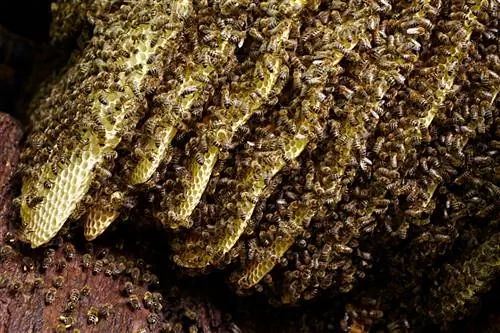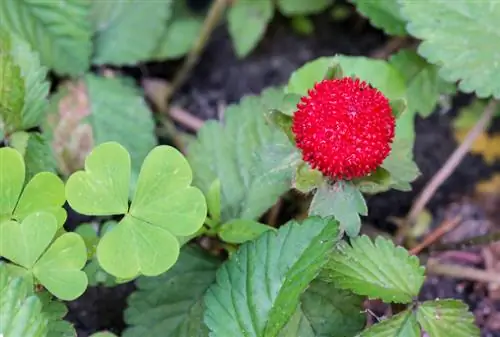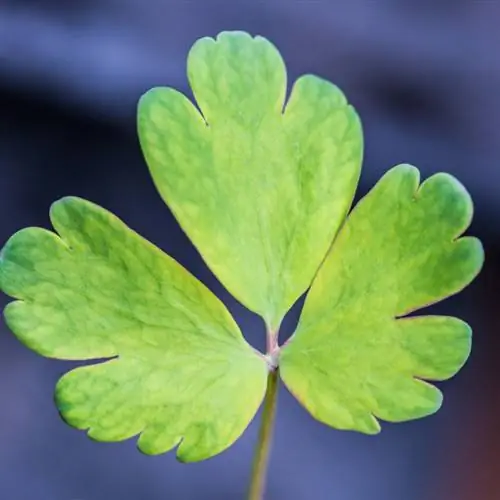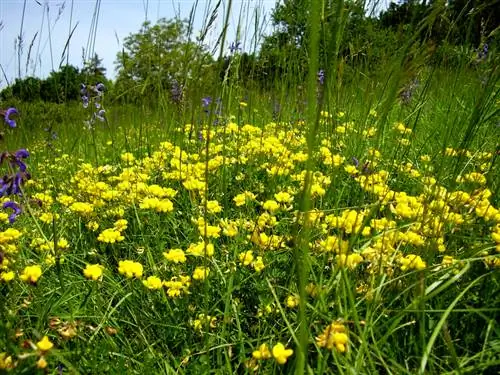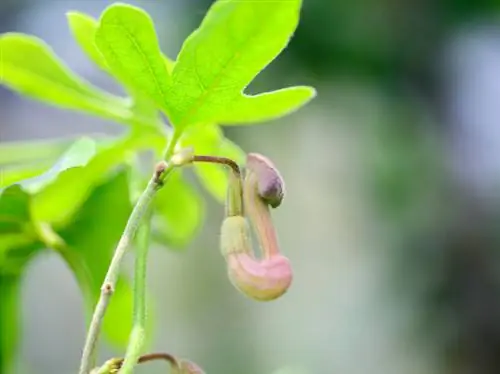- Author admin [email protected].
- Public 2023-12-16 16:46.
- Last modified 2025-06-01 06:02.
Elderberries and elderflowers have a wide variety of uses in food and drinks. There is still uncertainty regarding the meaning of elder leaves. Find out more about the toxic content and digestibility here.
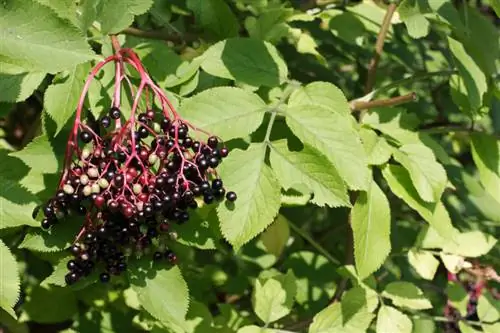
Are elder leaves poisonous or edible?
Elderberry leaves contain the poisonous sambunigrin, which can cause nausea and discomfort. They should never be eaten raw. Heating above 76.3 degrees Celsius neutralizes the poison, but retains its bitter taste. They can be used for medicinal purposes, for example as a tea or applied topically.
Pretty feathery leaves - pretty poisonous
All parts of elderberry bushes contain poisonous sambunigrin, which causes severe nausea and other complaints in sensitive people. This applies just as much to berries as to flowers and the decorative pinnate leaves. Good to know that the poison content dissipates at exactly 76.3 degrees Celsius.
Elderberries and flowers are therefore suitable for cooking into aromatic jam, delicious jelly or thirst-quenching juice. However, the leaves have a bitter, sharp taste that even the most ingenious recipe doesn't work for the better. They are therefore extremely unsuitable for the home menu. There is still a back door.
Never eat elderberry leaves raw
If elderberry leaves are eaten raw or not heated sufficiently, this can have fatal consequences. It is therefore generally not advisable to consume elder leaves or bark without boiling them thoroughly first.
The healing power of nature lies in elder leaves
The leaves of the black elderberry are full of valuable essential oils, vitamins and minerals. These ingredients have, among other things, immunizing, hemostatic and anti-inflammatory effects. Hippocrates recognized the he alth benefits of elder leaves in ancient times and recommended them for a wide variety of uses. Some popular examples from folk medicine:
- Soak fresh elder leaves in pork fat and place on bruises, burns, chilblains or eczema
- prepared as a tea, not tasty, but all the more healing for constipation and for blood purification
- A cup of elderberry tea every day strengthens resistance to colds
- dip a cotton ball in cold tea and place it on tired eyes
If the leaves are collected from April to June, they have the maximum amount of healing properties. Whatever is not intended for fresh consumption is dried and stored in a dark container. For a cup of tea, 2 teaspoons of the dried leaves are enough, poured over them with boiling hot water and strained after 5-10 minutes.
Tips & Tricks
The leaves of the elderberry can be used to make a very effective remedy for scaring away moles and voles. In particular, the moles, which are protected, run away from the intense stench of elderberry manure. To do this, ferment 1 kilo of elder leaves in 10 liters of water for 14 days in a sunny place. Then let the manure run into the corridors.


